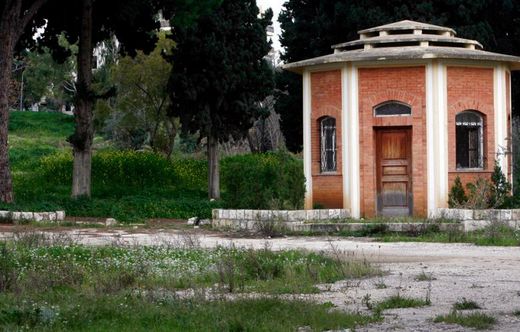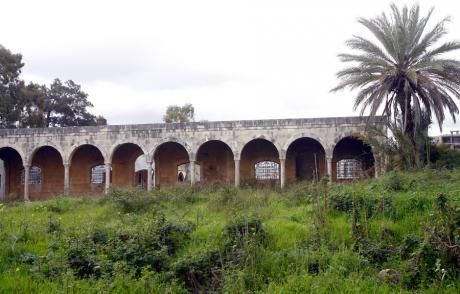
There are no people in Asfouriyeh today. It has become a sanctuary for birds who find refuge among the pine trees and ruins of the old buildings.
Asfouriyeh was built by American missionaries in 1890 with permission from the Ottoman Sultanate. It stretches over 130,000m2 of green space and includes 46 buildings in the area of Hazmieh, east of Beirut.
At the beginning of the 20th century, it was the largest mental hospital in the Middle East.
It may be the size of the asylum that made the word stick in the collective memory of the Lebanese, for whom Asfouriyeh became synonymous with any mental hospital.
When the asylum was shut down in 1972, the term remained in use and was attached to the Deir al-Salib (Monastery of the Cross) mental hospital.
The Geffinor company immediately took possession of it and planned to build a residential project there.
It was then that the "massacre" of the old historical buildings began and the hospital was cleared of all its patients.
The dismantling process continued during the civil war. Anyone who needed old building stones in the area would pay the Asfouriyeh a visit.
All that remains of the complex today are three buildings: the largest was the hospital administration building, while the second and third were used as wards for the patients.
It is clear that Solidere does not want anyone to remember that Beirut Village was once a mental asylum with hundreds of patients.
Construction of the main building was completed by the beginning of the 20th century. It was built with yellow stone with a traditional red brick tile roof. This building remains in good shape, surrounded by a garden with trees as old as the building itself.
A few meters away, lies the second building, which was built in the 1950s and was used as a hospital. It is still in relatively good shape and can be preserved.
As for the third building, its architecture is completely different. It has a large courtyard, surrounded by rooms and corridors connected to each other with concrete arches.
The roof of the third building has been destroyed, but the walls are holding up and the arches have not collapsed yet.
In practice, the preservation of such buildings would require an application to be filed with the general directorate for monuments to include them in their general survey, or a request has to be made by those who have owned it since 2008.
This is where the situation becomes more complicated. The Geffinor company sold the property to Abdallah Tamari (known as the front man for Solidere, in which the Hariri family has a major stake) for US$100 million dollars.
This was decided on the basis that the maximum investment on this land allows for the construction of 200,000m2 worth of space.

Therefore, the value of the project is now over US$300 million.
The Beirut Village project has recently been opened up to investors, under the supervision of the Arab Bank (known to be close to the Hariri family), and Med Securities Investment, which belongs to Bank Med (which is owned by the Hariri family).
The projects marketing announcement states that Solidere was chosen as the developer not because it owns the property but "because of its good record in managing the reconstruction of downtown Beirut."
Because Solidere is going to run the project, it is likely that it will know how to exploit the historical buildings to market its project.
However, it is categorically refusing to preserve the link with its past as a mental asylum.
When a production company making a drama series about the life of novelist May Ziadeh applied to film some scenes in the asylum, where the novelist spent part of her life, the application was rejected.
Consequently, visitors were prohibited from entering the premises altogether.
In the preliminary plans for the projects, one can easily see that the features of the area will be changed. For instance, the old pine woods will be replaced by green areas with palm trees.
On the poster advertising the project, the hospital is described as "The Ottoman House."
It is clear that Solidere does not want anyone to remember that Beirut Village was once a mental asylum with hundreds of patients.
This article is an edited translation from the Arabic Edition.



Reader Comments
to our Newsletter